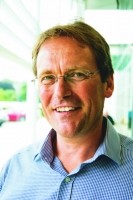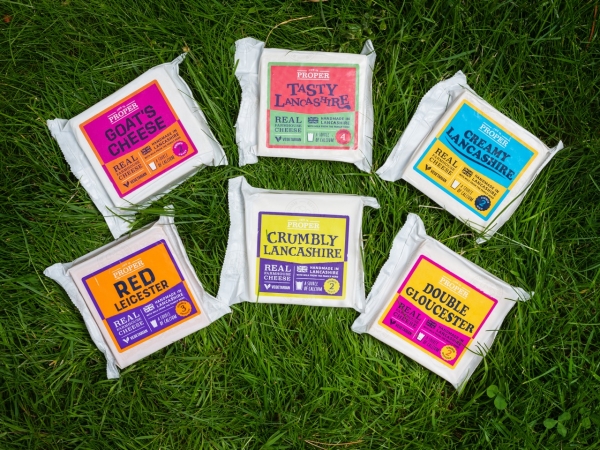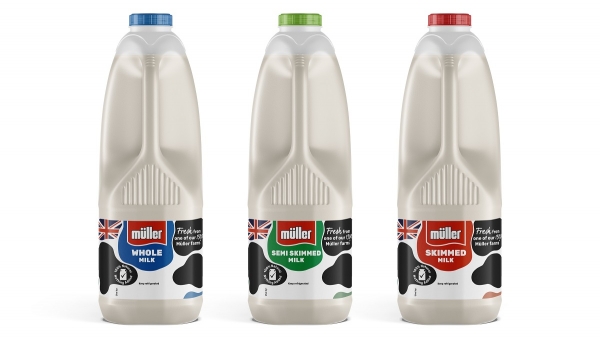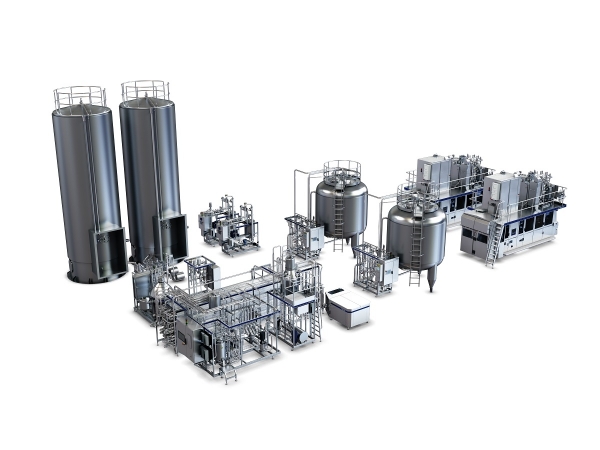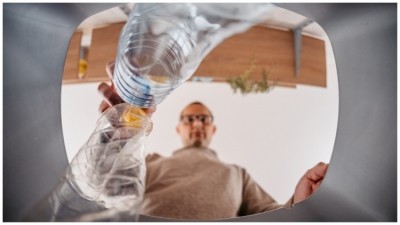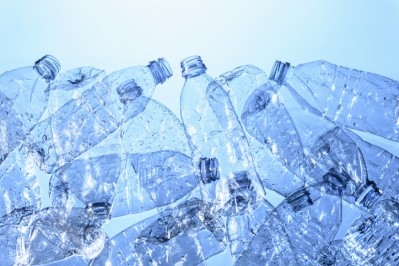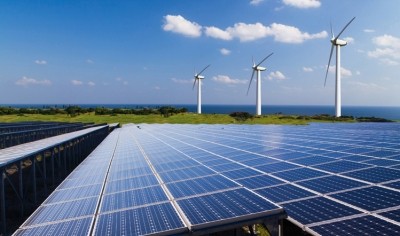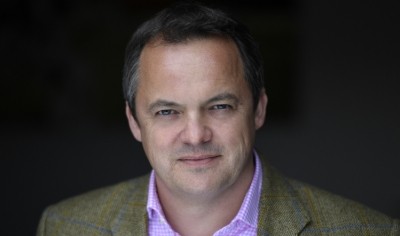Digital feature: long read
Dairy processing: cows, costs and carbon
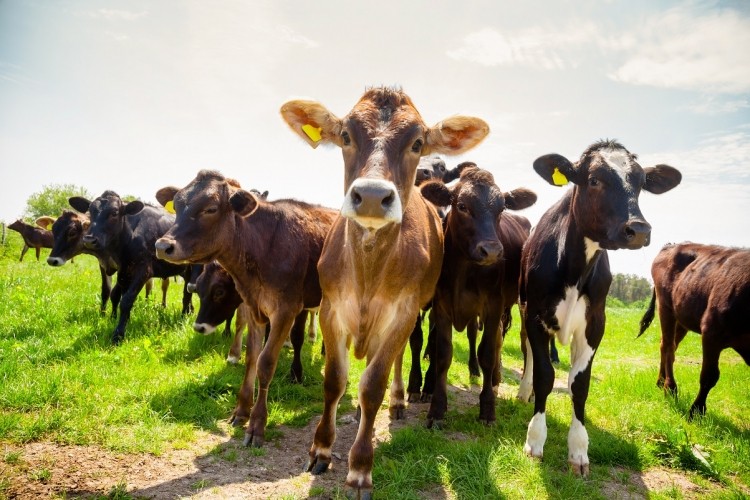
“Everything we buy is going up in price hourly,” he says. “I’m frightened to get up and look at my emails in the morning as I know more costs are coming at me!”
But rather than hiding under the duvet, Clothier has addressed the issue head on, increasing output per person by investing in automation and asking customers for support with cost increases.
Of course Wyke Farms is not alone in grappling with surging costs - all UK dairy operators are having to implement strategies for mitigating the knock-on effects of soaring energy and fuel prices.
At cheese packer Ornua Foods UK, inflation is also causing some headaches for managing director Bill Hunter.
Labour shortages
“There is no way of hiding from inflationary pressures, but as a business we have some well established ways of working with our retail customers that allow us to manage inflation,” says Hunter. “Labour availability is a challenge too. We have been working hard to make ours an attractive workplace. Pay is a major factor but it is also about softer benefits."
A multi-year automation investment programme is helping the company to insulate itself against labour shortages, he says. “Automation has historically been the enemy of flexibility but technology has improved significantly in recent years, creating opportunities to meet labour challenges and increase business efficiency, primarily through robotics.”
Matthew Butler, fourth generation co-owner of Butlers Farmhouse Cheeses, acknowledges rising costs and labour are an issue, but believes the deeper challenge is the underlying 'volatility'.
Volatility
As an example of how Butlers is riding out this volatility, this Easter saw the return of the Blacksticks Blue egg amid erratic ordering patterns and 26-week lead times for cartons. “We wondered how we could possibly satisfy those orders and surf that wave,” recalls Butler.
The company’s answer was to work closely with like-minded supply chain partners, such as Quantum Print & Packaging, he explains. “Whether carton board or ingredients, if we can buy directly from source that is a big win.”
As well as being squeezed by rising input costs, dairy processors and packers are under mounting pressure to cut carbon emissions. The ‘Dairy Roadmap Climate Ambition: Supporting UK Net Zero’ launched last year, committing the sector to evidence-led targets.
Scope 3 emissions
Whilst reducing Scope 1 and Scope 2 emissions tends to be where the low hanging fruit is, reductions in Scope 3 emissions, which are harder to measure and monitor, that have the potential to make the biggest impact. For dairy operators, this means looking downstream to on-farm emissions.
“In the typical dairy supply chain, and ours would be no different, about 90% of Scope 3 emissions are on-farm, so the big challenge for the whole dairy industry is tackling these emissions. We are working closely with our cheese suppliers on long-term projects that will reduce on-farm emissions,” says Hunter.
Müller, meanwhile, is targeting a 30% reduction in emissions from supplying farms by 2030, through its Müller Advantage programme.
The company says it has identified three key changes that will help farmers reduce their environmental footprint: encouraging the replacement or reduction of soya feed in cattle diets, using more natural fertiliser and increased use of genetics management.
And in Lancashire, Butlers Farmhouse Cheese is working with its supplying farms - friends and family within a ten-mile radius - and data scientists to apply AI (Artificial Intelligence) in order to better understand how it can influence milk composition, thereby increasing cheese yield.
“Cows produce more milk in the spring but the quality isn’t always great for making cheese because the solid (casein) content drops," says Butler. "Our work is using big data and science to get under the skin of that throughout the year. It might, for example, tell us when the best time is to put slurry on the grass to get the best value per litre of milk.
“If we help our farmers become just 1% more sustainable the emissions savings will be much greater than we could achieve through any packaging initiative. For this reason, reducing waste and improving yields is our number one focus. That’s good business and good business tends to be sustainable.”
Ultimately, businesses will need to be actively reducing Scope 1, 2 and 3 emissions if the industry is to meet its 2050 net zero carbon target.
Net zero versus carbon-neutral
However, David James, principal consultant with Auditel, points out there is a big difference between ‘carbon neutral’ and ‘net zero’, and that at present, it is not possible to be a net zero manufacturer as the carbon capture technology does not exist.
“Without grey water recycling you can’t be net zero," he says. "Carbon neutral - yes - with offsetting, however the net zero definition requires that no carbon is produced, which is impossible at the moment. That is why the Government has set a 2050 target.”
James’ advice to producers who are looking to target carbon neutrality is this: “The starting point for the process is to calculate your actual carbon footprint. Then, instead of spending on offsets, we would advise reinvesting that money in the business to reduce your carbon emissions over the next couple of years. Then revisit offsets when they are much lower.”
Wyke Farms's journey
In the dairy industry, Wyke Farms is one of the frontrunners in carbon neutrality. In January, the Somerset dairy announced that the Carbon Trust had certified the footprint of its Ivy’s Reserve Vintage Cheddar as carbon neutral in accordance with PAS 2060.
Clothier charts the producer’s journey to carbon neutral. “Firstly we addressed our Scope 1 and 2 emissions through energy, water and waste savings, addressing practical issues such as heat recovery, soft start motors and inverters to save energy. We then embarked on a process of producing all our electrical energy from solar and generators powered by biogas from our anaerobic digestion plant.
“We then installed a gas to grid plant that enables us to clean up green gas and put it back into the grid. Using this process we are able to inject 20,000 cubic metres of green gas back into the local grid per day - which contributes hugely to the carbon balance of the business.”
The next step was to work across its Scope 3 emissions which mainly come from farm, he continues. “We footprinted all farms to understand the drivers of greenhouse gas [GHG] emissions and introduced a new payment system called the ‘Pillar system’, which was the first of its kind in the UK to reward farmers for adopting practices that drive GHG emissions. Using this we have reduced our Scope 3 emissions by 25%.”
What is apparent from talking to operators is that packaging - although highly visible to consumers - does not feature prominently in their emission reduction strategies. Nevertheless, sustainability-led packaging innovation - in some cases driven by the 30% recycled content requirement laid down in the UK’s Plastic Packaging Tax - is alive and kicking across the sector. Müller is trialling clear milk container caps together with Waitrose in an effort to increase the availability of recycled high-density polyethylene [HDPE] packaging (there is currently higher demand than supply). Ornua Foods has moved its Pilgrims Choice grated cheese into fully recyclable packaging and Butlers is now looking at paper packaging for its Sunday Best hard cheeses, having already rolled out recyclable packaging across its entire range.
Interestingly, Butler says he is surprised at how little interest there has been from the trade in recyclability.
“It hasn’t been that sales door opener,” he says, adding, “but then we didn’t do it for the press - we did it because it’s the right thing to do.”
Three ways to cut costs and carbon
1. Invest in smart softwareWhile most medium to large dairy processors in the UK have ERP (enterprise resource planning) systems in place, according to CSB-System, many run separate systems for financials and operations, which can result in connectivity issues and blind spots, leading to poor planning and inefficient production.
CSB says this can be overcome with a fully integrated ERP system which covers both financial accounting and factory operations - including integration with shop floor machinery, weighing scales, flow meters and mobile data capture devices.
German dairy PrivatMolkerei Bechtel reports that it has saved 2-3 days in planning every week and eliminated production bottlenecks by installing a fully integrated ERP from CBS.
“As costs soar, our ERP system users benefit by having fewer interfaces to maintain, fewer manual copying tasks and only one technology partner. This leads to more effective and efficient planning processes where inputs, production and finished goods stock levels are better optimised with less time spent,” explains Matthew Simpson, sales manager at CSB-System.
Software systems that optimise production are another way of controlling costs, and one company at the forefront of this in a liquid dairy filling context is SIG. SIG’s solutions include SIG Plant 360 Asset Management - a modular software solution designed to improve filling line availability and reliability while controlling cost, and CombiLink - said to offer a new way of monitoring and analysing line efficiency and productivity.
2. Upgrade to best-in-class equipmentSIG says SIG NEO is the world’s fastest filling line for family-size carton packs, capable of up to 18,000 packs per hour. Through longer runs, shorter cleaning times, low waste rates and increased technical efficiency, SIG NEO is designed to deliver long-term savings along with 30% lower utility consumption, less water usage and reduced GHG emissions versus the company’s standard mid-size filling lines.
For UHT (ultra-high temperature) processed dairy products, Tetra Pak says upgrading to its UHT 2.0 heating platform, adopting OneStep technology (combining separation, standardisation, blending and heat treatment in a single step) and combining this with Tetra E3/Speed Hyper packaging equipment reduces water and steam consumption and generates less waste water. By adding a Tetra Pak Water Filtering Station, dairy manufacturers can recover 5,500 litres of water per filling machine running hour.
“When compared to a conventional line solution, this optimal integrated system reduces GHG emissions by 20%, water usage by 70% and product losses by 30%,” says Bengt Eliasson, Tetra Pak’s category manager for dairy.
3. Embrace packaging innovationsBy switching to cartons, Tetra Pak says liquid dairy producers can reduce the use of high carbon, fossil-based materials. Tetra Pak is now offering Tetra Rex plant-based cartons, manufactured from a combination of paperboard and plastics derived from sugar cane. Brakes supplier Yew Tree Dairy in Lancashire recently adopted this format for its chilled milk range.
Another liquid dairy packaging innovation gaining traction in Europe is the tethered cap, as EU producers seek to meet the Single Use Plastics (SUP) Directive that enters into force in 2024.
“Tethered caps play an important role in preventing litter, as the cap will stay attached to the packaging," says Eliasson. "They could also help reduce the carbon footprint of the carton when they are chosen as plant-based options, made from polymers derived from responsibly sourced sugar cane.”
SIG’s combivita carton packs are also available with a tethered cap option, and can incorporate SIG’s SIGNATURE FSC-certified wood sourced paperboard or be supplied without an aluminium barrier for an improved environmental footprint.
